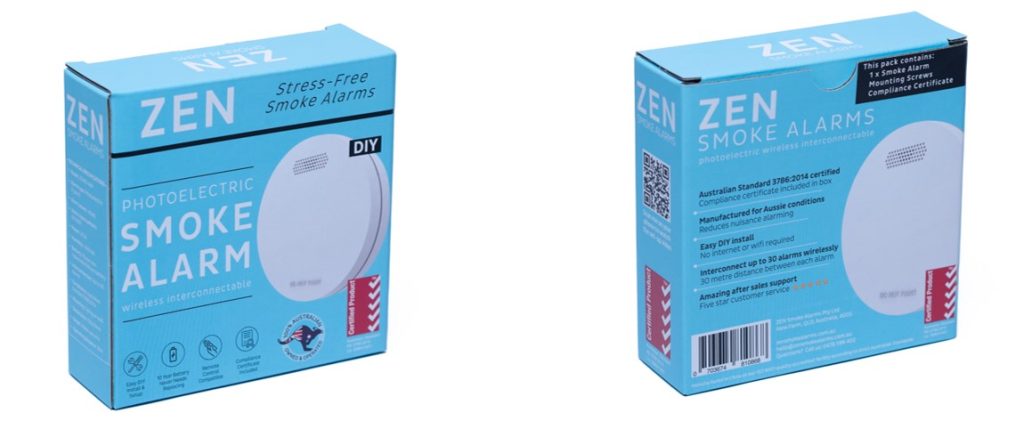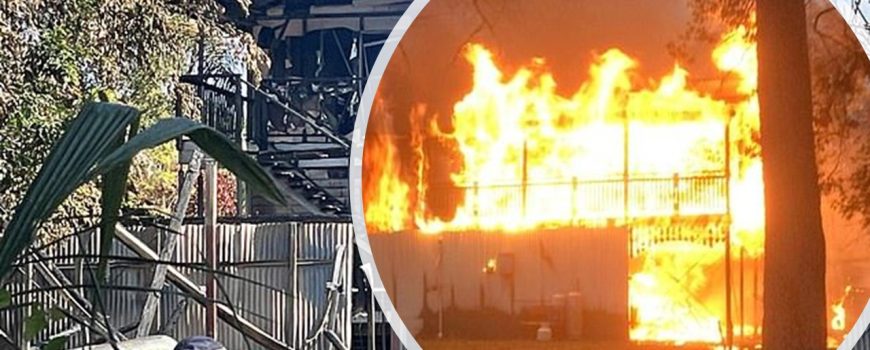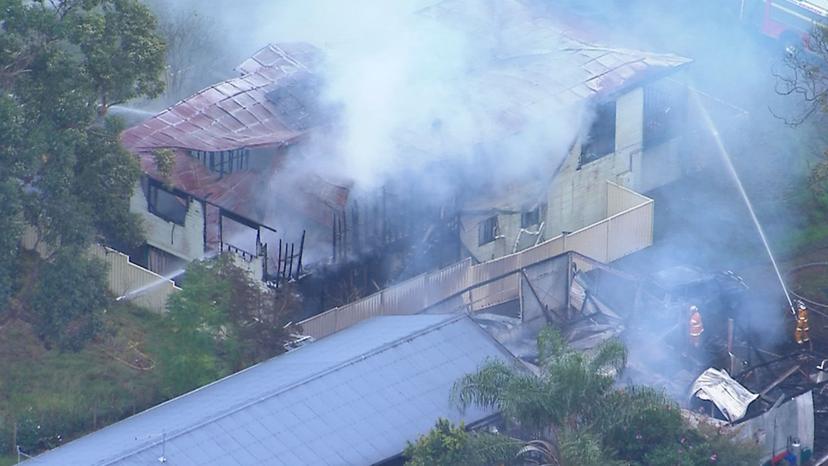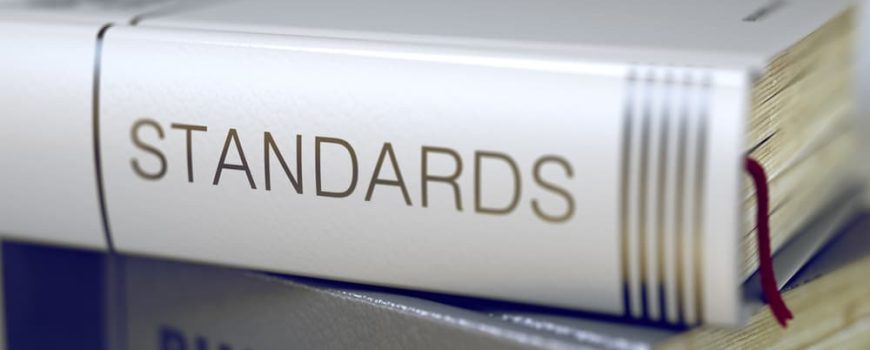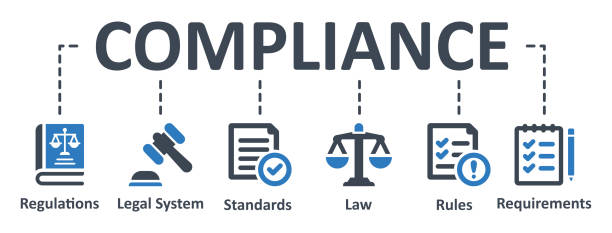The rise in the cost of living across Australia, particularly in Queensland, is a growing concern for families. As electricity, fuel, food, and insurance premiums increase, disposable income is stretched thin. While financial strain is a clear consequence, a lesser-known issue is the impact on residential house fire safety. With many homeowners cutting costs, it’s essential to prioritize photoelectric fire detectors to ensure reliable protection against fire risks. Photoelectric fire detectors offer early detection, especially for smouldering fires, and provide peace of mind in a time when safety should never be compromised.

As families tighten their budgets to meet basic needs, the temptation to cut corners on home maintenance and safety measures becomes more pronounced. One area where this compromise can have severe consequences is fire safety. Neglecting home fire safety, by not installing or maintaining interconnected photoelectric fire detectors, can significantly elevate the risk of house fires and leave a family exposed. Faulty appliances, aging electrical panels, outdated wiring and cheap electrical gadgets are other examples of potential fire hazards that may be overlooked in the quest to trim expenses.

Home Fire Safety And The Cost Of Living
In a recent article published in Queensland’s The Courier Mail newspaper, University of Wollongong fire expert Dr. Owen Price said the rising cost of living was likely affecting fire risk within homes, as many of the steps people could take to protect themselves required money. He highlighted how financial constraints were leading homeowners to overlook essential fire safety measures, such as updating outdated smoke alarms or maintaining electrical systems. As a result, the potential for preventable fires increases, putting individuals and families at greater risk. Dr. Price emphasized the importance of prioritizing fire safety, even in challenging financial times.
“A lot of people realise they are at risk, but they often don’t do anything about it and when cost of living comes in it’s often lowest on people’s priorities,” he said.
Cash strapped families also tended to live in cheaper, older housing, which was more vulnerable to fire, Dr Price said.
Older buildings with outdated fire prevention measures, such as a lack of interconnected photoelectric fire detectors, or inadequate escape routes, can pose a serious threat to residents. In such cases, the cost of living pressures directly translate into compromised safety. Many homeowners simply cannot afford to upgrade their smoke alarms, leaving them vulnerable to unnoticed hazards. Furthermore, older homes may lack modern fire-resistant materials, which can significantly increase the risk of fire spread.
The stress induced by financial strains can also lead to behavioural changes that impact fire safety. Individuals working multiple jobs or long hours may be more prone to fatigue, increasing the likelihood of negligence in daily tasks such as turning off stoves or unplugging electrical devices. Additionally, the inability to afford quality appliances and heating equipment may force individuals to resort to makeshift solutions, elevating the risk of electrical fires. With the right investments in fire safety, however, these risks can be minimized, ensuring peace of mind for families.
Install Interconnected Photoelectric Fire Detectors
To mitigate these risks, it is important for individuals facing cost-of-living pressures to prioritize fire safety. This includes installing and maintaining interconnected photoelectric fire detectors, performing regular checks of electrical systems, investing in quality appliances and avoiding cheap knock-offs, and staying vigilant about potential hazards. ZEN photoelectric fire detectors offer a 10-year long-life battery that never needs to be replaced, providing significant cost savings over conventional 9v battery-powered smoke alarms, which require new batteries to be purchased every year.
Additionally, when purchasing ZEN photoelectric fire detectors in a bundle pack (5/7/10-pack), customers receive a free remote control, further enhancing convenience and offering another cost-saving benefit by eliminating the need to buy separate testing devices. This combination of safety and savings makes ZEN smoke alarms a smart choice for budget-conscious homeowners, without sacrificing protection.
Government run public awareness campaigns and community initiatives can further emphasize the importance of fire safety in the face of financial challenges, ensuring that individuals and families can navigate these pressures without compromising their well-being. These programs can provide valuable information on affordable fire safety measures, such as the installation of photoelectric fire detectors, which offer early detection of smouldering fires and can be lifesaving in emergencies. Additionally, community workshops could teach basic fire safety practices, helping people make informed choices within their budgets. By fostering a collective mindset focused on proactive safety, these initiatives can empower residents to protect their homes and loved ones without feeling financially burdened.

Free Safehome Fire Safety Initiative
The QLD Fire Department’s ‘Safehome’ initiative is a free service provided in the interest of developing a safer Queensland community. Firefighters will visit your QLD home at no cost and advise you on the correct positioning of interconnected photoelectric fire detectors and discuss any other fire-related safety concerns. This proactive approach helps residents understand the importance of fire prevention, especially in homes with limited resources. Contact the Queensland Fire Department for further information and to make a booking, and take advantage of this invaluable service to safeguard your home.
Summary
By fostering a culture of awareness and not neglecting preventative measures such as interconnected photoelectric smoke detectors, we can ensure that the cost of living crisis doesn’t come at the expense of our most precious asset—our safety and well-being.
As Queenslanders, let us renew our commitment to safeguarding homes from the silent threat of fire that lurks within the shadows of the cost of living crisis. Investing in photoelectric fire detectors is a small price to pay for the peace of mind that comes with knowing our homes and loved ones are protected. With these life-saving devices, we can confidently face the future while prioritizing both safety and financial stability, knowing we are making a wise investment in our family’s protection and long-term security.

Want to know more? Watch our ZEN Smoke Alarm YouTube channel or call us on 0478 596 402 today
We love talking smoke alarms!
ZEN Photoelectric Smoke Alarms
New Farm, QLD, 4005




